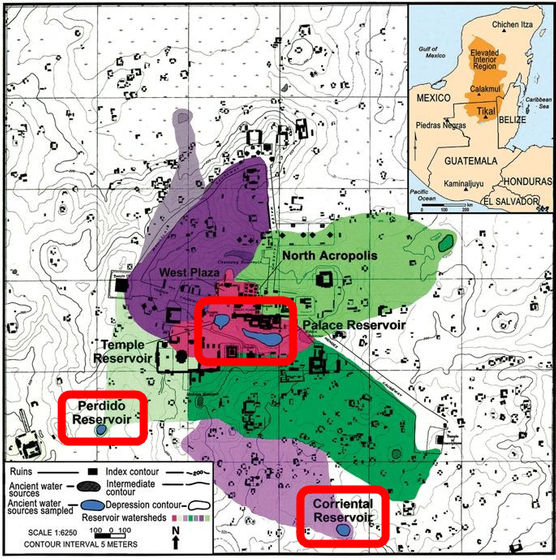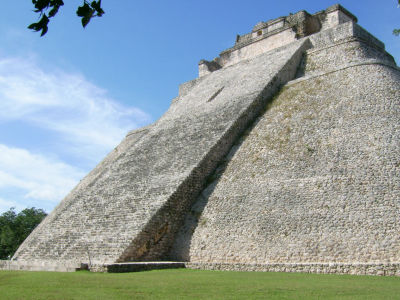The possibility that the city of ancient Maya civilization was abandoned because 'water was polluted with poison'

From the ruins of the
Molecular genetic and geochemical assays reveal severe contamination of drinking water reservoirs at the ancient Maya city of Tikal | Scientific Reports
https://www.nature.com/articles/s41598-020-67044-z
Ancient Maya reservoirs contained toxic pollution: study
https://phys.org/news/2020-06-ancient-maya-reservoirs-toxic-pollution.html
Ancient Maya reservoirs were polluted with toxic mercury, blue-green algae | University Of Cincinnati
https://www.uc.edu/news/articles/2020/06/n20927014.html
Tikal, which was once the center of the political economy of the Maya civilization, existed in the Peten Basin in northern Guatemala today, but it is said that Tikal was abandoned around the 9th century. The reason why Tikal has declined has been argued as 'because unreasonable agricultural production caused the land to lose weight due to population growth,' but it is not clear.
Therefore, a research team consisting of chemists, anthropologists, geographers, biologists, botanists, etc., to clarify the reason why the city of Tikal was abandoned, it was called 'Palace' 'Temple' 'Perdido' 'Corriental' 4 Sediments from three large reservoirs were collected and analyzed.

As a result of the analysis, the DNA of two
``The trouble is that the toxic chemicals produced by the cyanobacteria found here were resistant to overheating, so this paleobiologist, University of Cincinnati, said,'' I think the water in the reservoir didn't last for drinking even when boiled.'
We also found that the 'Palace' and 'Temple' reservoirs contained very high levels of mercury. In the ancient Maya civilization, it was said that the building was painted with bright plaster, and the pigment used was a vermilion mineral containing mercury sulfide extracted from a nearby volcano. The research team believes that the mercury contained in this pigment melted into the rain and flowed into the reservoir.
While the 'Palace' and 'Temple' reservoirs in the center of the city were contaminated with toxins and mercury, no evidence of cyanobacteria was found in 'Perdido' or 'Corriental'. Also, although the concentration of mercury was harmful, the toxicity level was lower than that in the center of the city. As such, it is believed that the majority of Tikal inhabitants obtained drinking and agricultural water from 'Perdido' and 'Corriental.'

However, it is thought that there were times when there was a serious water shortage because the areas where Tikal had little rain except during the short rainy season when a large amount of rain fell. Lenz said, 'Tikal people would have had a hard time getting water because it was moist during the heavy rains of the year, but otherwise it was dry with little rainfall.' It also suggests that unreserved reservoirs may have bottomed out due to the drought.
'The leaders of the Maya civilization were said to be able to manipulate water in a special relationship with the rain gods,' said Nicholas Dunning, a geographer at the University of California, co-author of the paper. The sight of the water glorifying at the majestic palace and the temple reflected on the water would have been a powerful symbol of their power.'
However, when the water in the reservoir was polluted so that it could not be drunk, it is believed that people began to think that 'the leader failed to calm the gods.' In addition to this, the research team points out that due to the decrease in the supply of water and food due to drought and the like, the population is flowing out of the city. Also, people of the ruling class living in the city center had no choice but to drink water contaminated with mercury, but when mercury's health damage impaired leadership, the decline in centripetal force became crucial.
In the paper, the research team said, 'Tikal's decline is a complex tapestry of multiple disasters. This study newly revealed factors such as mercury and organic pollutants, which contribute to drought and environmental impact. The hypothesis that deterioration is the cause of decline is more strongly supported.'
Related Posts:
in Note, Posted by log1l_ks







